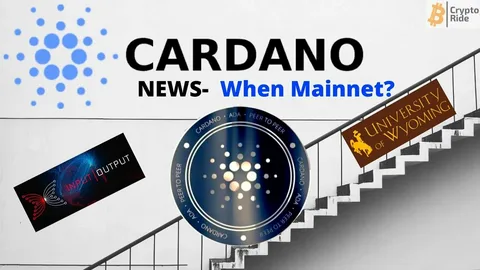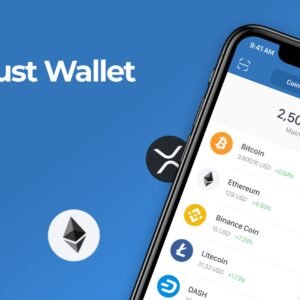In the ever-evolving world of blockchain technology, decentralization stands as one of its most cherished ideals. Charles Hoskinson, the visionary founder of Cardano, has consistently emphasized his commitment to achieving full decentralization for the platform.
His latest plans aim to elevate Cardano’s community governance to new heights, solidifying its position as one of the most innovative and participatory blockchain ecosystems.
This blog explores Charles Hoskinson’s plans, the mechanisms driving full Cardano decentralization, and how community governance plays a pivotal role in realizing this ambitious vision. Join us as we delve into the intricacies of this journey.

The Vision for Full Cardano Decentralization
At its core, blockchain technology thrives on decentralization—removing centralized authorities and enabling peer-to-peer transactions and decision-making. Charles Hoskinson’s vision for Cardano extends far beyond technical decentralization to include governance led by its vibrant and diverse community. This is where Cardano sets itself apart, with Hoskinson focusing on the long-term sustainability and evolution of the network through active community participation.
Decentralization within the Cardano ecosystem is multi-faceted. From staking and block production managed by thousands of independent operators to governance decisions shaped by its stakeholders, Cardano’s decentralized ethos is deeply embedded in its structure. Hoskinson’s plans aim to solidify these foundations by fostering an inclusive and participatory model of community governance, ensuring no single entity holds undue influence over the network.
Central to achieving full Cardano decentralization is Voltaire, Cardano’s governance era. This phase will introduce mechanisms that empower the community to vote on proposals, allocate funds, and directly shape the network’s future. By doing so, Hoskinson aims to redefine what decentralization means in a practical sense, enabling real-world application of community-led decision-making.
Voltaire: The Foundation of Community Governance
The Voltaire era is one of Cardano’s most anticipated developments. As part of Charles Hoskinson’s plans to achieve full Cardano decentralization, Voltaire introduces critical governance tools that ensure the network’s continuous evolution without the need for centralized oversight. At the heart of this system lies a decentralized treasury and voting mechanism that grants every ADA holder a voice in decision-making.
The decentralized treasury system collects fees from transactions and staking rewards, creating a self-sustaining fund to support future projects. Community members can propose initiatives, from technical upgrades to new partnerships, and these proposals are voted on by the Cardano community. This ensures that funds are allocated transparently and according to the community’s priorities.
What makes Voltaire particularly exciting is the democratization of governance. Instead of relying on a select group of developers or executives, Cardano empowers its users to collectively decide the platform’s trajectory. Hoskinson’s emphasis on transparency and inclusivity shines through in this era, setting Cardano apart as a pioneer in blockchain governance.
The tools introduced during Voltaire are not just theoretical; they are designed to solve real-world challenges. By involving the community in governance decisions, Cardano creates a robust and adaptable ecosystem capable of addressing new challenges as they arise. This is a vital step in Charles Hoskinson’s plans to ensure that Cardano remains fully decentralized and community-driven.
Catalyst: A Blueprint for Active Participation
Project Catalyst is another cornerstone of Charles Hoskinson’s plans to achieve full Cardano decentralization through community governance. As the world’s largest decentralized innovation fund, Catalyst empowers individuals and teams to propose and vote on projects that benefit the Cardano ecosystem. This initiative exemplifies how Cardano transforms its users from passive participants into active contributors.
Through Catalyst, Cardano’s community members can submit proposals to receive funding for their ideas. These proposals are then reviewed, debated, and voted on by the wider community, creating a competitive yet collaborative environment for innovation. From blockchain education initiatives to groundbreaking technical solutions, Catalyst has already funded numerous projects that have enriched the Cardano ecosystem.
Hoskinson views Catalyst as a living example of Cardano’s governance capabilities. By providing a platform for meaningful engagement, Catalyst showcases how decentralized decision-making can be both effective and efficient. Moreover, it builds trust within the community, as users see their voices genuinely impact the platform’s growth.
Catalyst is not merely an experiment—it’s a testament to Cardano’s commitment to decentralization. As this initiative continues to expand, it serves as a blueprint for how blockchain platforms can integrate governance with innovation, fulfilling Hoskinson’s vision of a truly community-driven ecosystem.
Challenges and Opportunities in Achieving Decentralization
While Charles Hoskinson’s plans for full Cardano decentralization are ambitious and inspiring, they are not without challenges. One significant hurdle is educating the community about governance mechanisms and ensuring that all stakeholders have the tools and knowledge to participate effectively. Decentralization thrives on inclusivity, and achieving this requires continuous effort to onboard and empower users.
Another challenge lies in balancing decentralization with efficiency. Decision-making by a large community can be time-consuming, potentially slowing down critical processes. To address this, Cardano has implemented structured governance systems, such as delegation and representative voting, ensuring decisions are both democratic and practical.
Despite these challenges, the opportunities for Cardano are immense. A fully decentralized and community-governed blockchain not only enhances security and transparency but also positions Cardano as a leader in blockchain innovation. By fostering a strong, engaged community, Hoskinson’s plans ensure that Cardano remains adaptable and resilient in an ever-changing technological landscape.
The roadmap to decentralization also opens the door for collaborations with governments, enterprises, and developers. As Cardano becomes more decentralized, its credibility and appeal as a neutral platform increase, paving the way for widespread adoption and integration into diverse industries.
Conclusion: Building the Future Together
Charles Hoskinson’s plans to achieve full Cardano decentralization through community governance represent a bold and transformative vision for the blockchain industry. By empowering its community with tools like Voltaire and Catalyst, Cardano is not just creating a decentralized network—it’s building a self-sustaining ecosystem that thrives on collective intelligence and shared purpose.
As Cardano continues to evolve, the role of its community becomes increasingly vital. The success of this vision depends on the active participation of its members, from proposing new ideas to shaping the platform’s governance. By working together, Cardano’s community can turn Hoskinson’s ambitious plans into reality, setting a new standard for what blockchain decentralization can achieve.
What do you think about Charles Hoskinson’s plans for Cardano? Share your thoughts and join the conversation in the comments below!






